Growing your own yellow dragon fruit, also known as yellow pitaya, from seed is one of the most exciting and rewarding gardening projects you can take on. These exotic, cactus-based fruits are not only stunning to look at but also rich in nutrients and bursting with tropical sweetness. In this post, we’ll walk through the complete process — from sprouting your baby dragon fruit seedlings to caring for them as they grow into strong, fruit-bearing plants.
Whether you’re an experienced gardener or a beginner curious about exotic fruit plants, this step-by-step guide will help you cultivate yellow pitaya successfully in your own home or garden.
What Is Yellow Dragon Fruit?
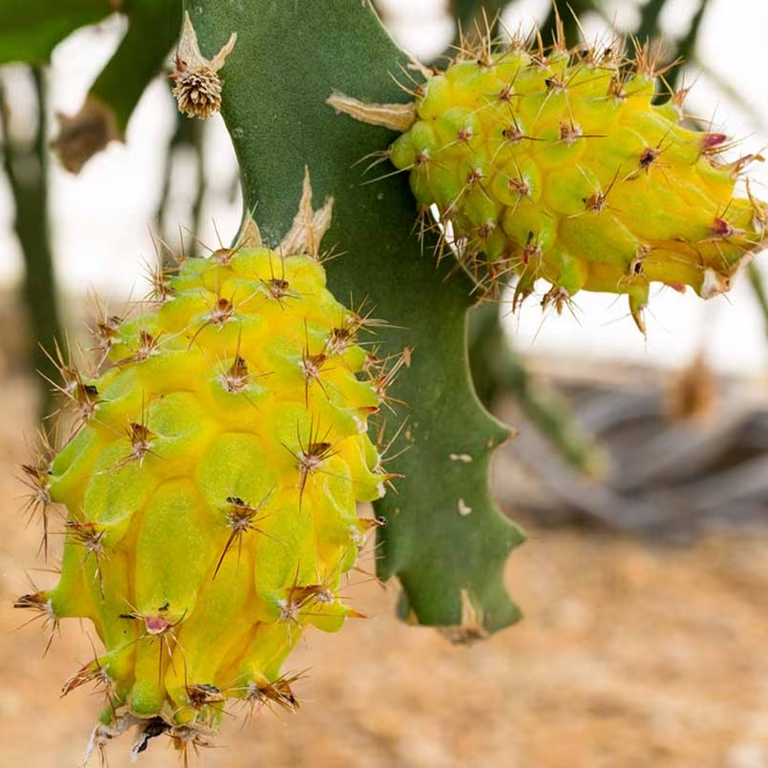
Yellow dragon fruit (Hylocereus megalanthus) is a climbing cactus native to South America. Unlike the red or pink-skinned varieties of dragon fruit, yellow pitaya is smaller but far sweeter. Its bright yellow skin and white, seed-speckled flesh make it a tropical gem — perfect for desserts, smoothies, or even enjoyed fresh off the plant.
One of the most interesting things about yellow dragon fruit is how easily it can be grown at home, even from seed. The process requires patience, but the results are worth every bit of effort.
Step 1: Collecting and Preparing the Seeds
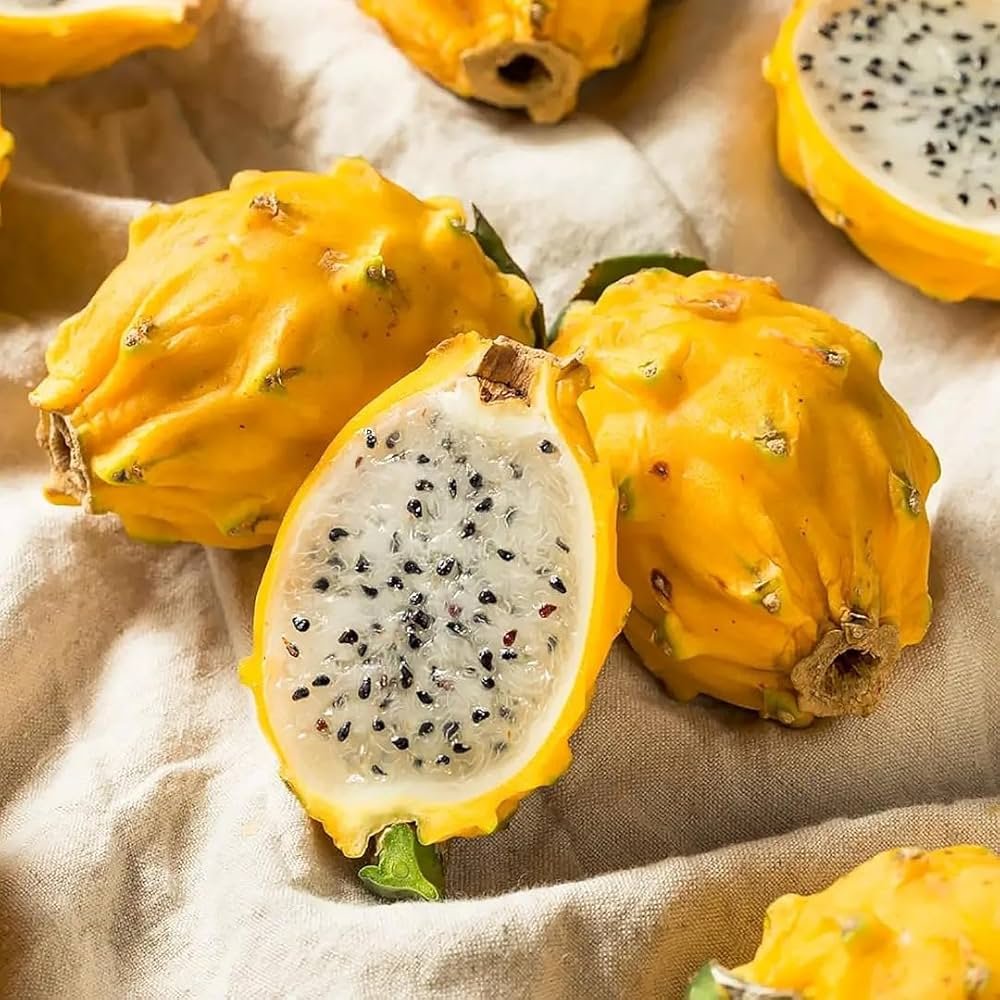
The first step to growing your own yellow dragon fruit is collecting seeds from a fresh fruit. When you cut open a ripe yellow pitaya, you’ll find it filled with hundreds of tiny black seeds — much like those in a kiwi.
Here’s how to prepare them for planting:
- Scoop out the seeds along with a bit of the fruit pulp using a spoon.
- Rinse the seeds in a fine mesh strainer under cool water. Rub them gently to remove all traces of pulp, as the sticky residue can prevent proper germination.
- Dry the seeds by spreading them out on a paper towel. Let them sit for 24 hours in a warm, airy place.
Once the seeds are dry, you’re ready to plant!
Step 2: Sprouting the Seeds (Germination)
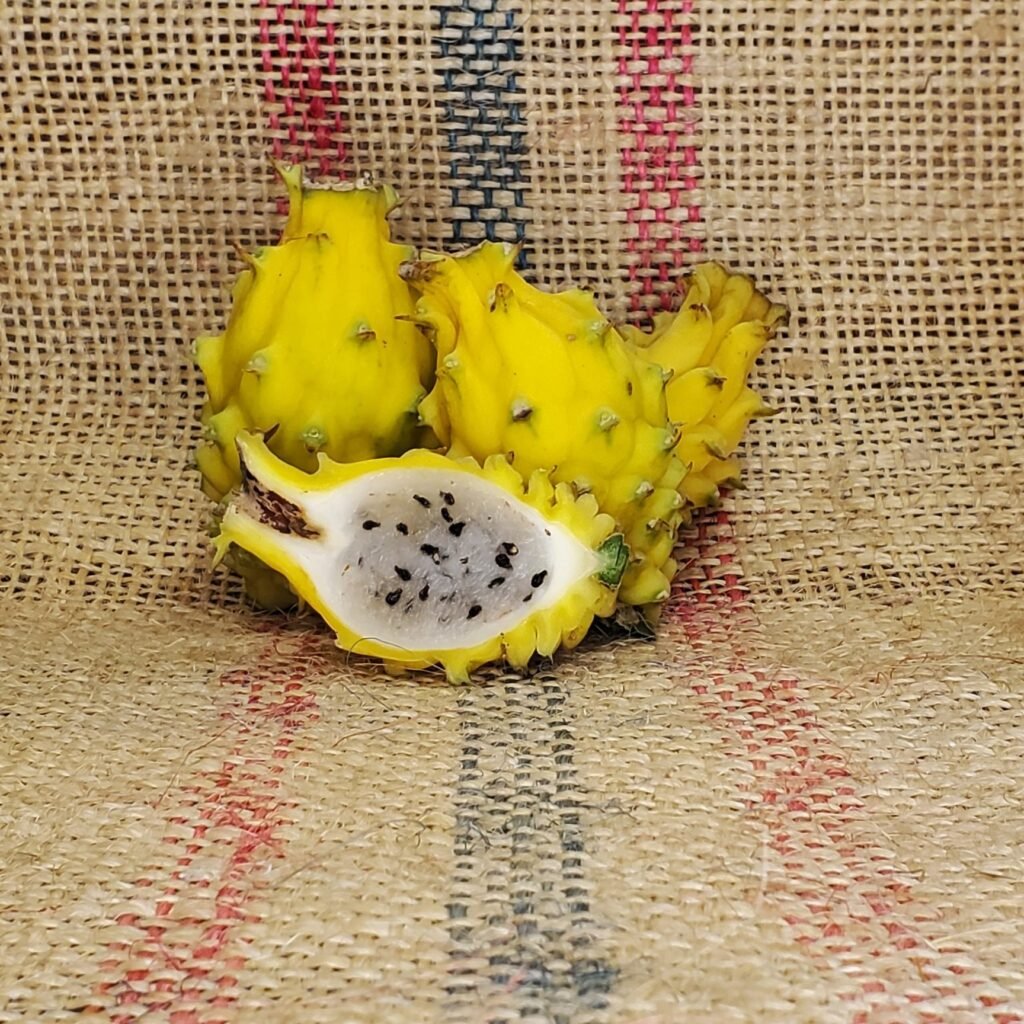
Dragon fruit seeds are tiny but resilient. To help them germinate quickly and evenly, you can use one of two popular methods:
Method 1: Paper Towel Germination
- Moisten a paper towel with clean water and place the seeds evenly across it.
- Fold the towel gently, ensuring the seeds remain spaced apart.
- Place it inside a resealable plastic bag or container to retain moisture.
- Keep the setup in a warm, well-lit spot (around 25–30°C / 77–86°F).
You should start seeing tiny sprouts within 10–15 days.
Method 2: Direct Sowing in Soil
- Fill a seed tray or shallow pot with a light, well-draining soil mix (cactus or succulent mix works great).
- Sprinkle the seeds on the surface — don’t bury them too deep; a light dusting of soil is enough.
- Mist gently with water and cover the container with plastic wrap to create a mini greenhouse effect.
Within a couple of weeks, you’ll see baby dragon fruit seedlings emerge like tiny green cacti.
Step 3: Providing the Right Conditions for Growth
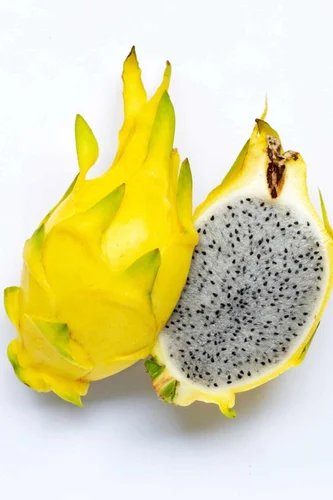
Once your seedlings have sprouted, the next step is to help them grow strong and healthy. Dragon fruit plants love warmth, light, and air circulation, so it’s crucial to maintain the right environment.
- Light: Place your seedlings in bright, indirect sunlight. If indoors, a sunny windowsill or under a grow light works perfectly.
- Temperature: Keep them in a warm place, ideally between 20–30°C (68–86°F).
- Humidity: While germinating, they like a bit of humidity, but as they grow, reduce excess moisture to avoid fungal issues.
When the seedlings reach about 2–3 inches tall, you can transplant them into small individual pots.
Step 4: Transplanting and Potting the Seedlings
Yellow dragon fruit seedlings develop fast once they’re established. When their roots begin to outgrow the small germination tray or the seedlings have a few sets of small cactus-like branches, it’s time to move them to larger containers.
Here’s how to do it:
- Prepare small pots with well-draining cactus soil or a mix of garden soil, perlite, and sand.
- Gently lift each seedling with a spoon or soft tool, being careful not to damage the roots.
- Place them into their new pots and press the soil lightly around the base.
- Water sparingly — just enough to keep the soil slightly moist.
Dragon fruit plants don’t like waterlogged soil, so drainage is key. You can even add a few pebbles at the bottom of the pot to prevent root rot.
Step 5: Caring for Baby Dragon Fruit Plants
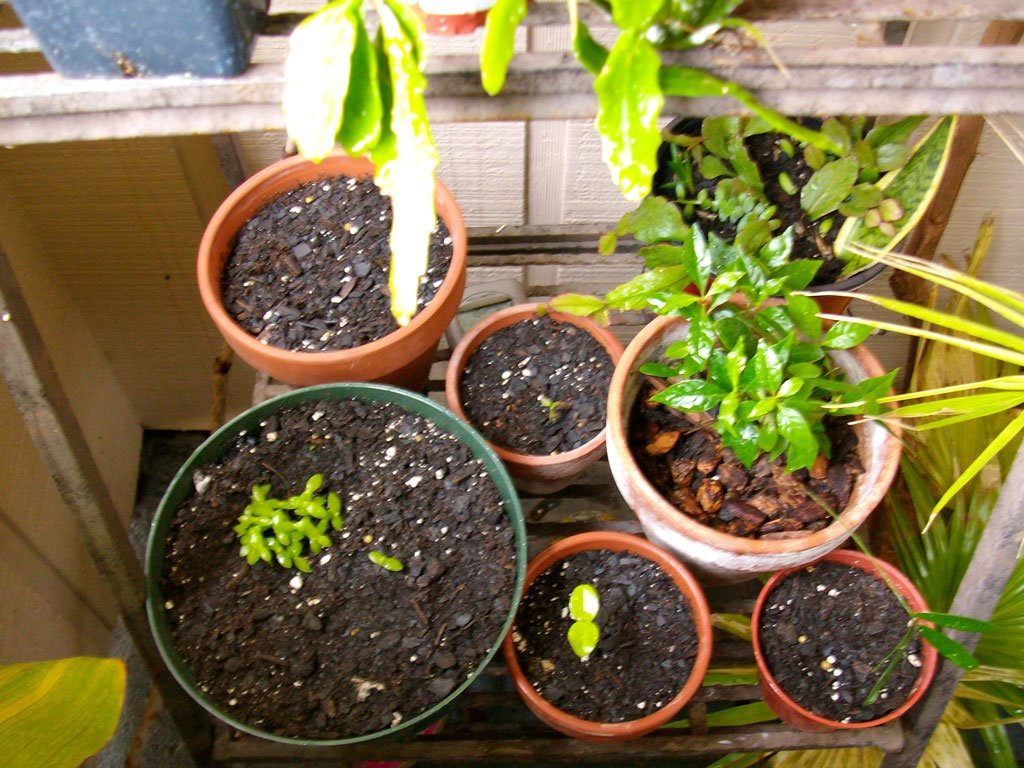
As your yellow pitaya seedlings grow, consistent care will ensure they develop into healthy, fruit-bearing plants.
1. Watering:
Dragon fruit is a cactus, so it doesn’t need frequent watering. Once the seedlings mature, water them only when the top inch of soil feels dry. Overwatering can easily lead to rot.
2. Sunlight:
Gradually increase their sun exposure as they grow stronger. Once mature, they’ll thrive in full sunlight for 6–8 hours a day.
3. Fertilizing:
Feed your seedlings with a balanced liquid fertilizer (diluted to half strength) once a month during the growing season. Organic compost or worm castings can also be added for natural nourishment.
4. Support Structure:
Dragon fruit plants are climbing cacti — they need something to hold onto. Once your seedlings start developing long stems, place a small stake or trellis in the pot to help them grow upward.
Step 6: Transferring Outdoors
If you live in a warm tropical or subtropical climate, your dragon fruit can eventually be moved outdoors once the plants are strong enough (usually around 6 months old).
- Choose a sunny spot with well-draining soil.
- Dig a hole about 12 inches deep and wide, and gently plant your young cactus.
- Provide a sturdy post or trellis for climbing support.
If you’re in a cooler region, keep them in large pots so you can move them indoors during the winter.
Step 7: Patience and Flowering
Growing yellow dragon fruit from seed is a long-term project — patience is essential. While rooted cuttings may fruit in 1–2 years, plants grown from seeds can take 3 to 5 years before producing flowers.
When the time comes, you’ll notice beautiful, large white night-blooming flowers — a sign that your plant is mature and ready to bear fruit. Pollination may be required if you’re growing indoors, which can be done by hand using a soft brush to transfer pollen from one flower to another.
Step 8: Harvesting the Sweet Yellow Pitaya
After successful pollination, the fruit begins to form and ripen in about 40–60 days. You’ll know it’s ready when the skin turns bright yellow and the spines fall off naturally.
Cut the fruit gently from the stem using pruning shears, and let it rest for a day before eating. The sweet, fragrant flesh inside is rich in vitamins, fiber, and antioxidants — making it a refreshing and healthy treat.
Tips for Success
- Use well-draining soil: Dragon fruit roots hate soggy conditions.
- Avoid overwatering: Water deeply but infrequently.
- Provide sturdy support: Mature vines can grow heavy.
- Be patient: Growing from seed is slow but deeply rewarding.
Conclusion
Growing yellow dragon fruit (pitaya) from seed to seedling and beyond is a fascinating journey. Watching your baby dragon fruit sprouts develop into beautiful climbing cacti that eventually reward you with delicious, golden fruits is one of the most satisfying gardening experiences imaginable.
With a bit of patience, warmth, and love, you can turn a handful of seeds into a thriving tropical treasure right at home — proof that even the smallest sprouts can produce something extraordinary.
Whether you’re starting this project for fun, beauty, or the joy of harvesting your own exotic fruit, your yellow dragon fruit seedlings are the perfect start to a rewarding gardening adventure.
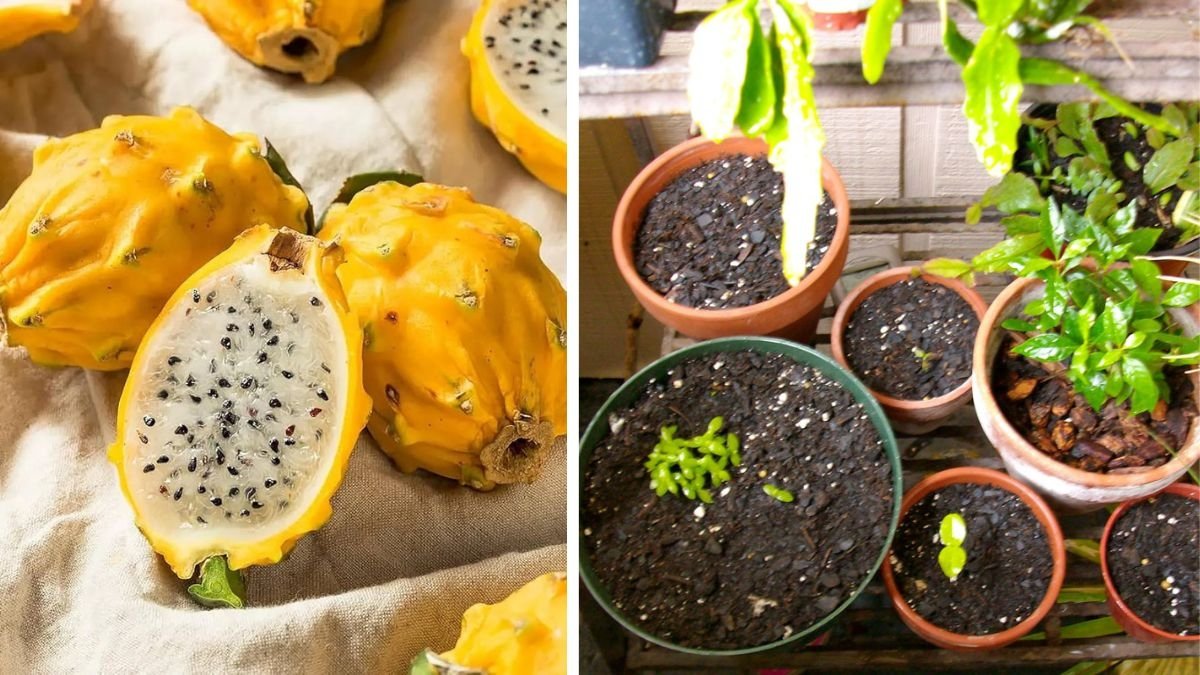





Leave A Comment